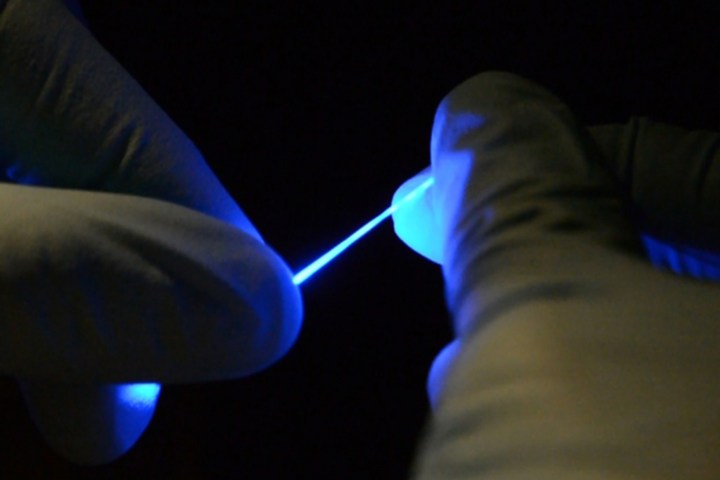
But materials scientists in Professor Polina Anikeeva’s laboratory at the Massachusetts Institute of Technology want to change that with rubbery, conductive fibers that can stretch and flex. They hope the fibers can someday be implanted into a patient’s spinal cord to study neurons and potentially even stimulate function in people with serious injuries.
“Spinal cord is a challenging structure to interface with,” Chi (Alice) Lu, an MIT graduate student and one of the researchers behind the project, told Digital Trends. It stretches up to 12 percent during normal movements and can be easily damaged by seemingly minor interferences.
In their work, Lu and her collaborators set out to mimic the flexibility of the spinal cord. They created the stretchable fiber by combining a transparent elastomer with a nanowire mesh coating, enabling it to stretch up to 30 percent and conduct electricity.
“The result is an optoelectronic probe that works in spinal cords of freely moving mice,” Lu said. The researchers say they are the first to demonstrate simultaneous optical stimulation and neural recording in freely moving mice.
Down the line, the researchers hope their fibers can help restore function to patients with spinal cord injuries by revealing how different types of spinal cord cells respond to different types of recovery efforts. However, they first need to make the fibers biocompatible and capable of withstanding the stresses of the spine. In the meantime, they have more manageable goals.
“We hope that our probes will enable studies of spinal cord circuits in small animal models of neurological and neuromuscular disorders,” Lu said. “They may also elucidate the neuronal pathways contributing to recovery following spinal cord injury.”
The researchers recently published a paper detailing their work in the journal Science Advances.


